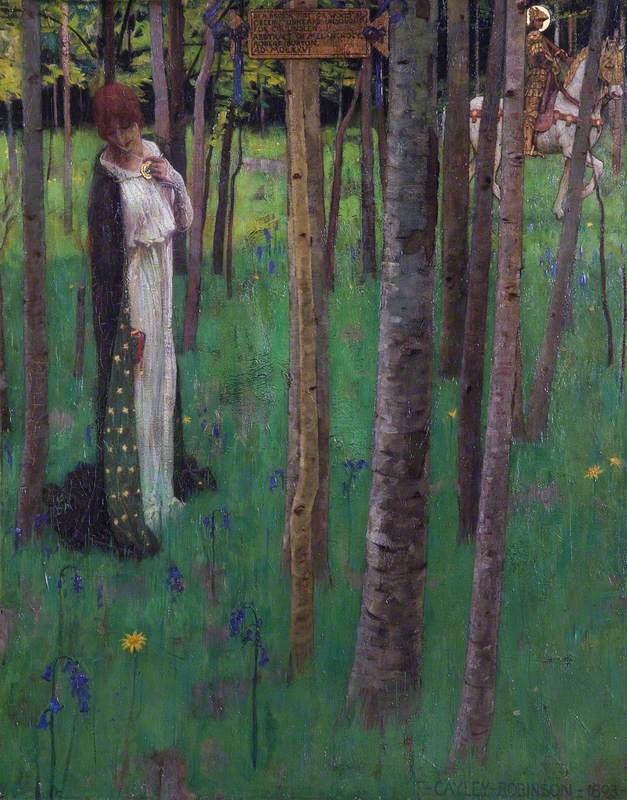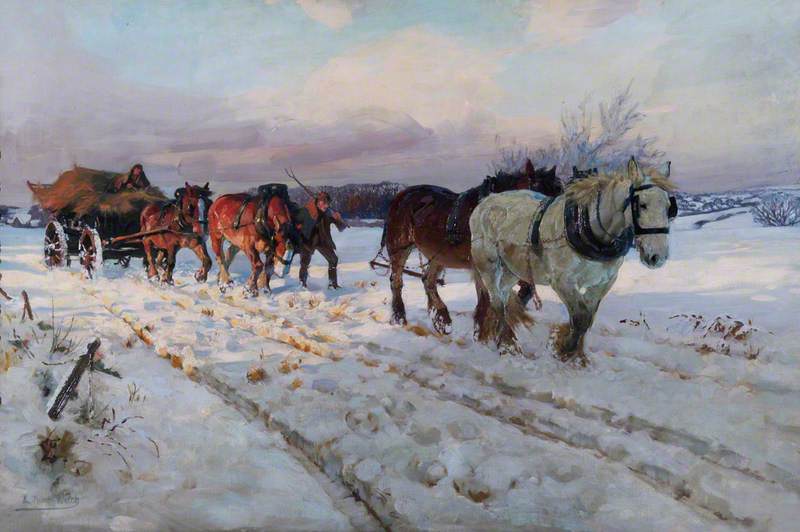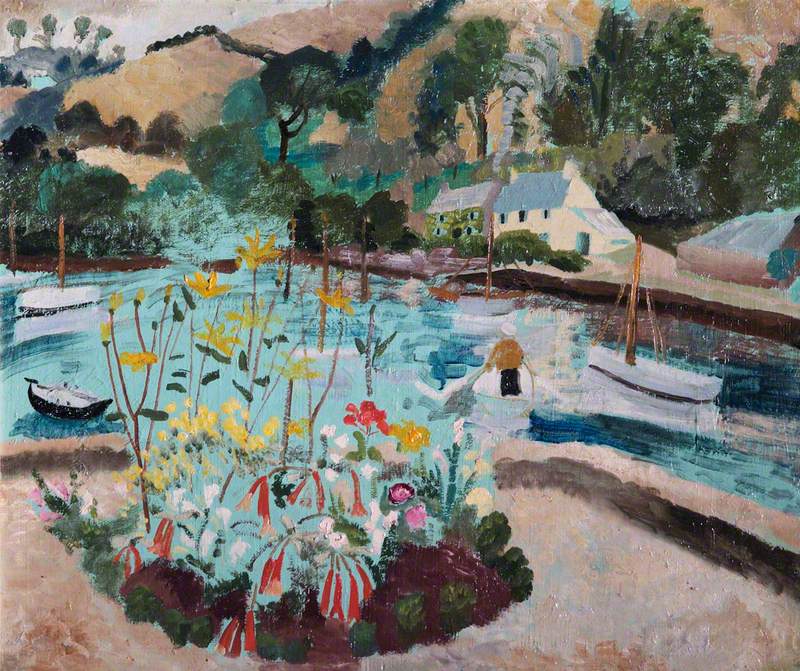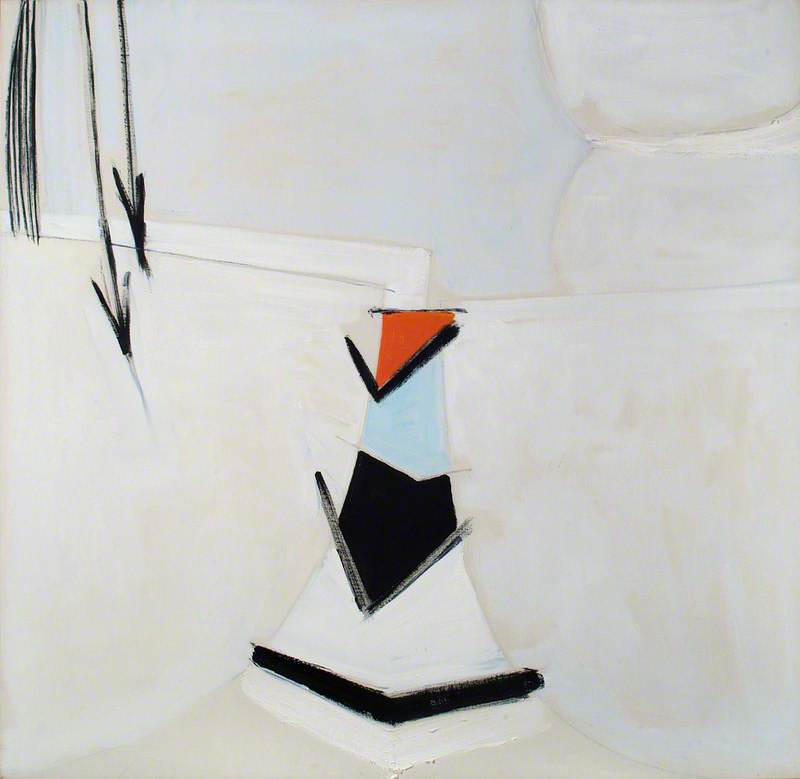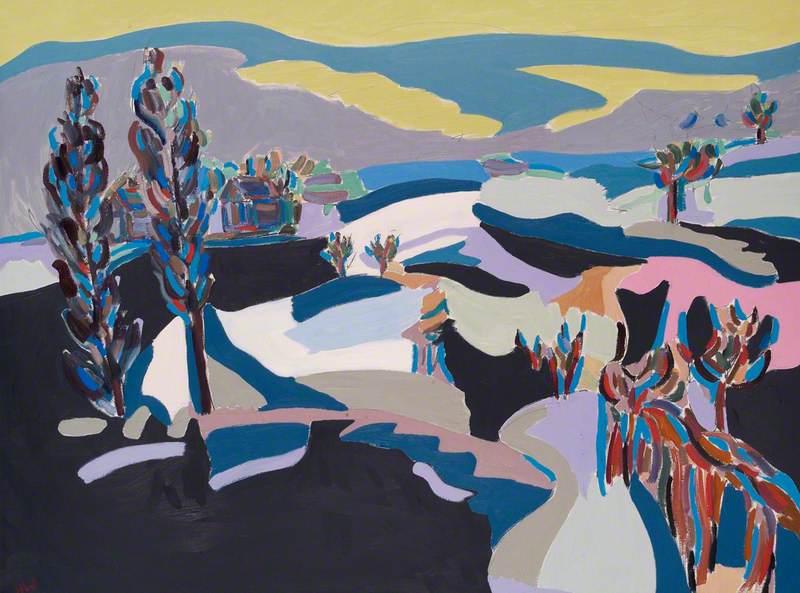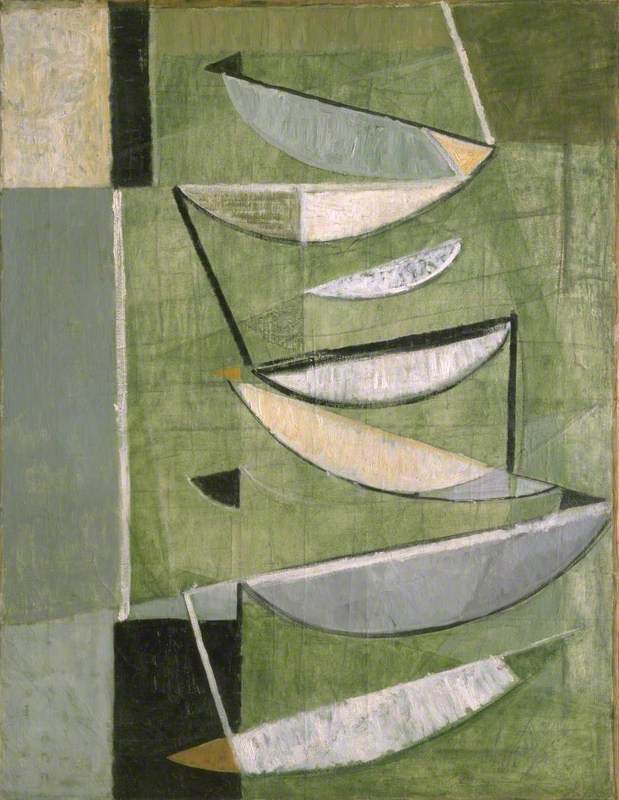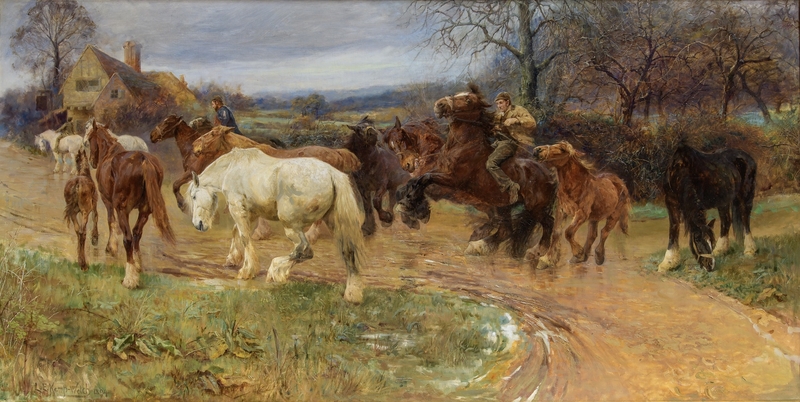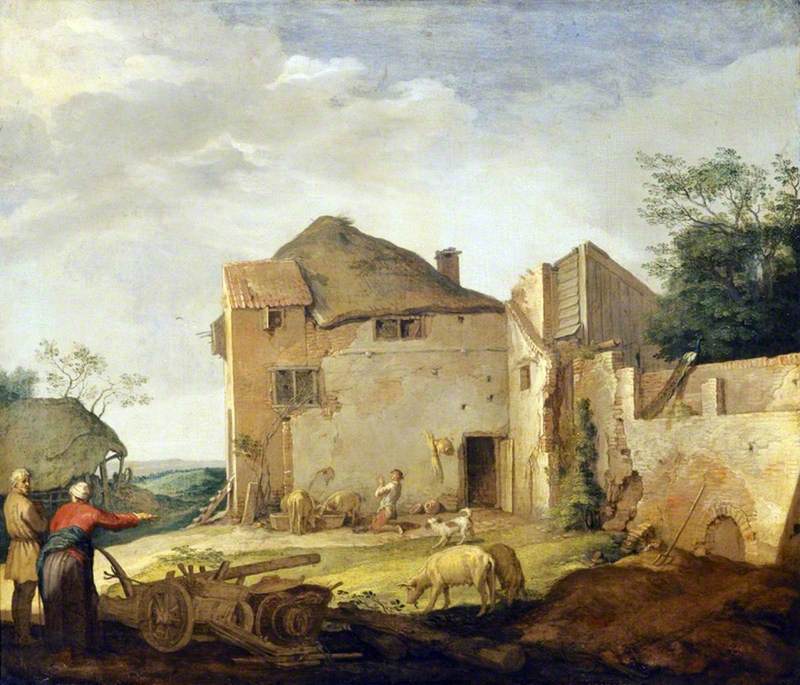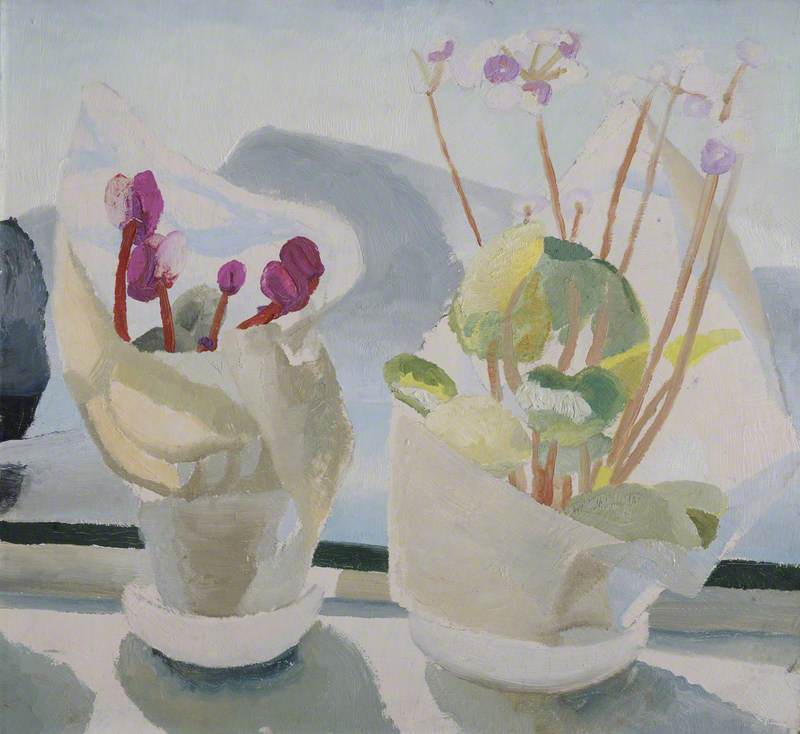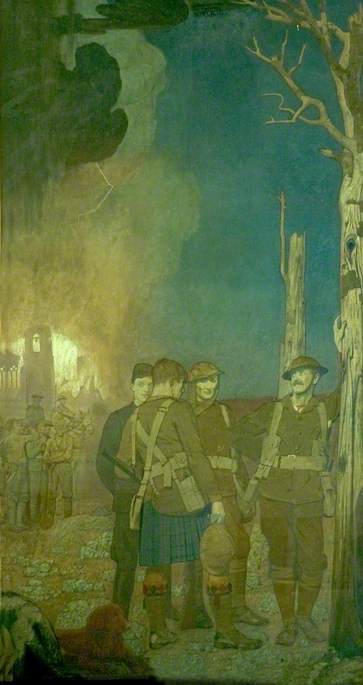Leamington Spa Art Gallery & Museum (LSAG&M), situated in the Grade II listed Royal Pump Rooms, was established in 1928. LSAG&M consists of a museum and art gallery showcasing Warwick District Council’s collection, Haddie's Family Gallery and a purpose-built temporary exhibition space, which hosts three exhibitions per year. There are almost 14,000 objects in LSAG&M’s collection, covering fine and decorative art, social history, world cultures and numismatics.
Art Unlocked is an online talk series by Art UK in collaboration with Bloomberg Philanthropies. This Curation is based on a talk by Jane Simpkiss, Art Curator, on 9th November 2022. You can find a recording at https://youtu.be/lwiSAPRxAdY
-
The Prodigal Son
The Prodigal Son 1615This painting has been described as the best example of Bloemaert’s work in a British collection. Bloemaert was a prolific painter of religious paintings, genre scenes and landscapes. In this work, he depicts a moment from the parable of the Prodigal Son as told in the Gospel of St Luke. Having squandered his inheritance, the prodigal son is forced to work as a swineherd. Friendless and alone, he begs God’s forgiveness. Bloemaert depicts a beam of heavenly light cutting across the composition, signalling the character’s redemption. Bloemaert sets the biblical story in a recognisable location, a seventeenth century Netherlandish farmyard, to allow viewers to connect with the tale more easily.
Abraham Bloemaert (1566–1651)
Oil on canvas
H 105.8 x W 164.2 cm
Leamington Spa Art Gallery & Museum
-
In a Wood So Green
In a Wood So Green 1893Whilst many British artists in this period were captivated by French impressionism and post-impressionism, a number of British artists were inspired by the ideas and symbolism of the Pre-Raphaelite Brotherhood working in the mid-19th century. Artists, like Frederick Cayley Robinson, used Pre-Raphaelite imagery such as the damsel and a knight on horseback in this work to explore modern ideas. Here, the artist’s experimental visual combinations produce a work which grapples with issues of psychology and spiritualism, creating an ambiguous image that cannot be read or understood in conventional terms. The painting has an unsettling atmosphere that leaves the viewer with a sense of mystery and wonder.
Frederick Cayley Robinson (1862–1927)
Oil on canvas
H 75.5 x W 59 cm
Leamington Spa Art Gallery & Museum
1893, oil on canvas by Frederick Cayley Robinson (1862–1927)
-
Winter's White Silence
Winter's White Silence 1923–1924Lucy Kemp-Welch is known as one of the most consummate painters of horses in modern British art. It is the labouring horses, not the workmen, which take center stage in this work. Many of her paintings reflect the artist’s desire to highlight the importance of horses as their significance dwindled in an increasingly industrialised Britain. The dynamic colour and movement in this work is the result of Kemp-Welch’s studies of horses from life, sometimes from horseback herself. Her work owes something to the work of the French Impressionists, and she often painted ‘en plein air’ (outside of the studio).
Lucy Elizabeth Kemp-Welch (1869–1958)
Oil on canvas
H 125 x W 181.5 cm
Leamington Spa Art Gallery & Museum
-
Summer
Summer 1928Winifred Nicholson considered flowers to be the perfect subject to encapsulate modern ideas about painting with their unruly bursts of colour and naturally abstract, uncontrollable geometry. Nicholson often depicted bunches of flowers in the foreground of her work, placing them on windowsills and tables, and using their colour to activate their surroundings, making the image sing. Here, she uses the flower bed in the same way, enlivening the Cornish landscape beyond. Nicholson considered flowers to be inspirational.
However, for some, flowers were not seen as a sufficiently modern subject. It is only recently that the pioneering nature of Nicholson’s work has been recognised.
Winifred Nicholson (1893–1981)
Oil on board
H 65 x W 77.5 cm
Leamington Spa Art Gallery & Museum
-
Orange and Blue
Orange and Blue 1963Terry Frost was a powerful figure in the British abstract art movement. Frost grew up in Leamington and held a number of jobs around the town. His experiences in the Second World War encouraged him to pursue art professionally. He trained at Camberwell School of Art and moved to Cornwall to join the group of artists living and working in St Ives. He loved the vibrant colours of the Cornish landscape and, like many artists in the area, was inspired by the light of the region. Whilst his bright and colourful works are mainly abstract, they are often suggestive of the boats and coastline of Cornwall. LSAG&M has significant holdings of Frost’s work including paintings, prints, sculpture and ceramics.
Terry Frost (1915–2003)
Oil on canvas
H 101.2 x W 101.2 cm
Leamington Spa Art Gallery & Museum
-
Black Snow
Black Snow 2000The dynamic blocks of vibrant colour and loose brushstrokes of this painting seek to inspire an emotional, imaginative response in the viewer. Here, Weinberger abstracts a wintry view of Hampstead Heath, capturing how the light undulates across the snowy landscape, creating sculptural forms. Weinberger has often been overlooked as an artist due to his continued commitment to the painting traditions of the early twentieth century, such as impressionism, post-impressionism and fauvism. His work was often seen as contrary to the growing post-war interest in conceptual art.
Harry Weinberger (1924–2009)
Oil on canvas
H 77 x W 100.4 cm
Leamington Spa Art Gallery & Museum

